If you buy through our links, we may earn an affiliate commission. This supports our mission to get more people active and outside.Learn about Outside Online's affiliate link policy
The Best Winter Tents for Snow, Wind, and Everything In Between
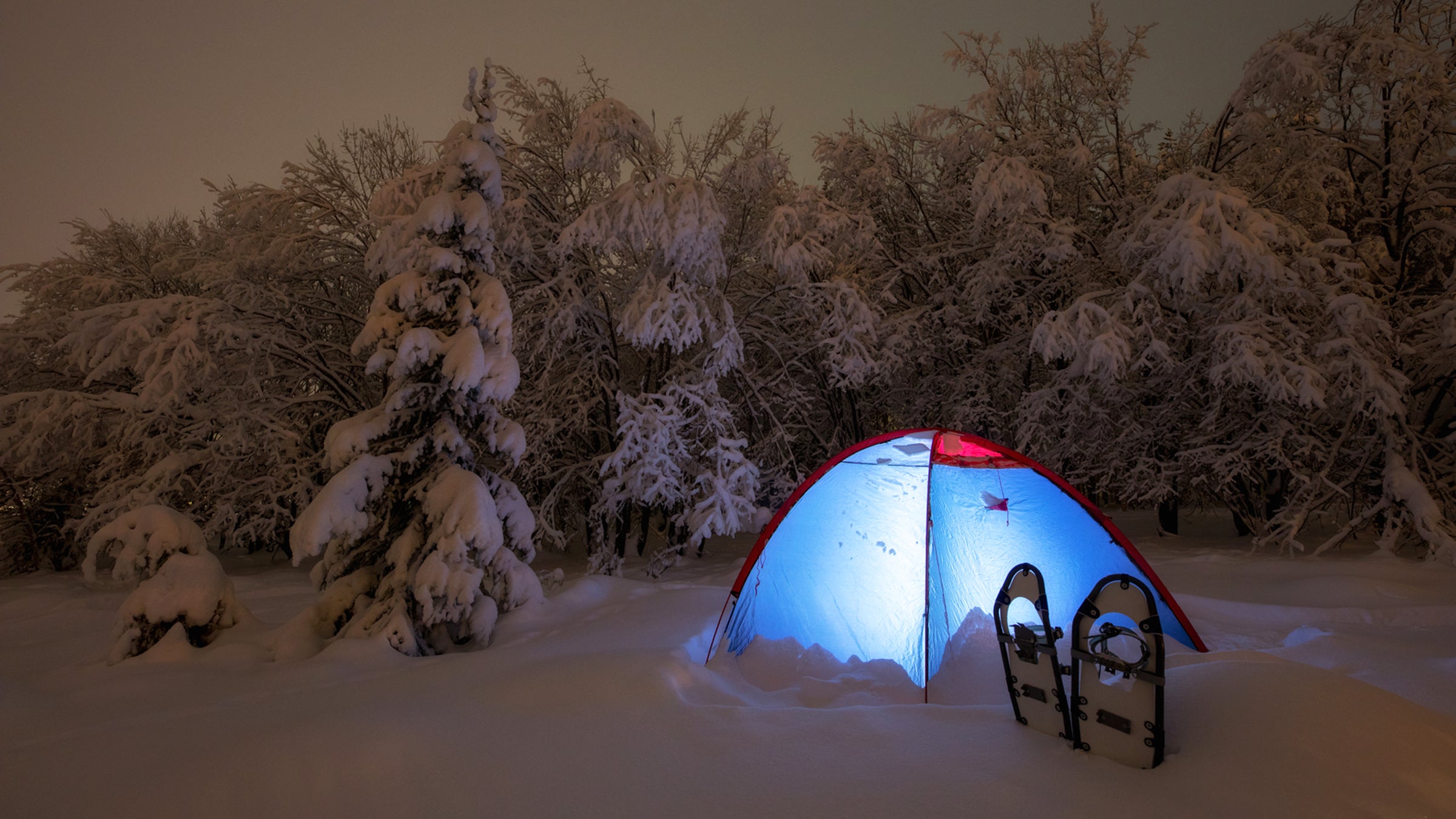
(Photo: Sergey Lukankin/Stocksy)
Winter camping means something different to everyone. For some, it’s an expedition up Denali. For others, it’s a snowshoe-powered overnight below treeline. And that nuance is important: no one wants to lug a 12-pound, gale-proof basecamp when a simple pyramid tent will do, or find themselves undergunned in a blizzard. To cover all the scenarios you might come up against, we looked at simple pop-ups, expedition tents, and everything in between. During the course of that testing, we weeded out needlessly heavy and potentially dangerous four season tents in favor of the strongest, lightest, most weather-proof shelters on the market.
At a Glance
- Best for Beginners: SlingFin Portal 3 ($600)
- Best Weekend Warrior: MSR Access 2 ($560)
- Best Basecamp: MSR Remote 2 ($720)
- Most Livable: Big Agnes Copper Spur HV2 Expedition ($480)
- Most Versatile: Tarptent Scarp ($489)
- Best Value: Black Diamond Mega Light ($400)
- Lightest: Hyperlite Ultamid 2 ($699)
- Strongest: Hilleberg Nallo 2 GT ($1066)
- Most Innovative: Argali Absaroka 4 ($843, tent and stove)
- How to Choose a Four-Season Tent
- How We Test
- Meet Our Testers
If you buy through our links, we may earn an affiliate commission. This supports our mission to get more people active and outside. Learn more.
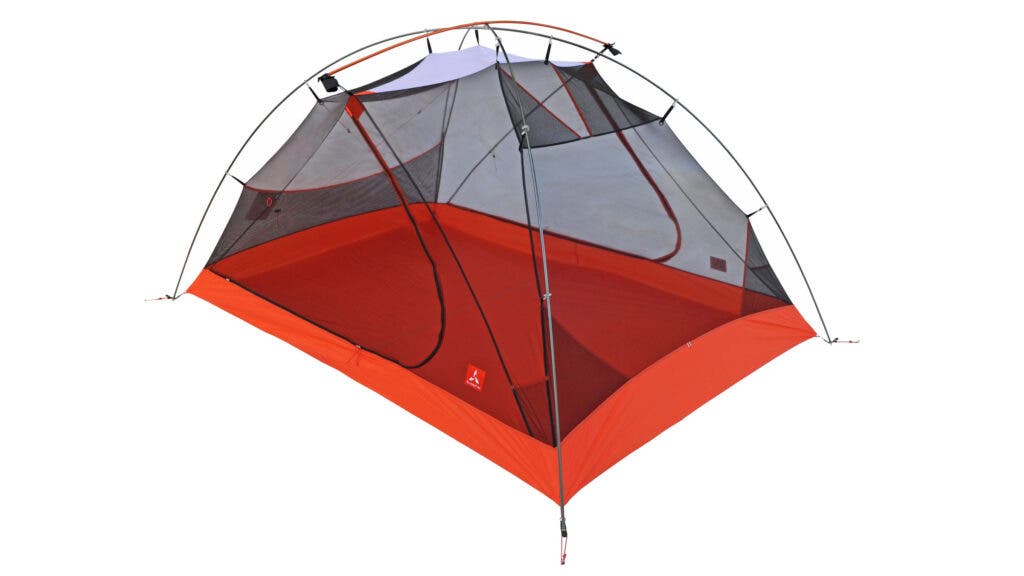
Best for Beginners
SlingFin Portal 3
Weight: 4.2 lbs
Peak Height: 44 inches
Vestibule Space: 20 square feet
Pros and Cons
⊕ Lightweight
⊕ Easy to set up
⊕ Large vestibules for winter gear
⊗ Mesh inner panels sacrifice some weather protection
The Portal 3’s light weight, all-mesh interior, easy setup, and weatherproof fly make it a formidable four-season tent that’s ideal for winter newbies heading out on short excursions, like snowshoe camping or other below-treeline overnights.
Setup is quick and straightforward: the tent uses two poles connected with a swivel, as well as a single cross-pole to create a strong, freestanding pitch. That pitch is reinforced by ten external guy-out points (with included lines) and two internal, pre-installed guylines that you can tighten for increased stabilization in high winds. It holds up great in rain and snow, too, thanks to nine-millimeter aluminum poles; a 20-denier, PE-coated bathtub floor; and a 10-denier, silicon-coated Nylon 66 ripstop fly.
“By the time we staked out all ten guy lines, it was clear that this tent would survive just about anything,” reported one tester from Kaibab National Forest in Arizona. “We had 25-mph gusts and the tent didn’t move.”
The 41.5-square-foot interior was tight for three people, but the generous 44-inch peak height, 20 square feet of vestibule space, and eight pockets—including one that runs the entire width of the tent—lend a feeling of spaciousness. Two kickstand vents on the fly aid ventilation and help keep condensation to a minimum when the hatches are battened down.
An all-mesh body does mean more heat loss in cold, windy conditions, but helps with condensation. It’s also one of the few shelters on this list that’s as comfortable as a typical three-season tent during the summer months.

Best Weekend Warrior
MRS Access 2
Weight: 4.1 lbs
Peak Height: 42 inches
Vestibule Space: 17.5 square feet
Pros and Cons
⊕ Packable
⊕ Small footprint
⊕ Weatherproof
⊗ Pricey
Testers uniformly describe the double-walled Access 2 as an ideal ski-touring tent for weekend warriors. It has the weather protection you need for short winter overnights, while hovering around the 4 pound mark and packing down to the size of a paper towel roll. While it’s no mountaineering tent, it fills a niche for fast-and-light winter adventures.
“The Access bridges that gap between bombproof mountaineering and three-season camping,” said one tester after a two-day spring storm that brought 25-mph winds and three inches of snow in Alaska’s Chugach Range.
The backbone of the Access 2 is a single hubbed Easton Syclone pole. Made from a composite mix of fiber, carbon, and resin, the pole boosts tent strength and flexibility in high winds, and the simplicity makes it easy to pitch in just minutes after a long day of skiing.
The tent is fairly tall at 42 inches, with 29 square feet of interior space. Its near-vertical walls help shed snow and improve livability—it’s easy to sit up straight and change clothes. Two vestibules (17.5 square feet total) shelter packs, ski boots, and bulky outerwear, while two doors allow easy access in and out without climbing over your touring buddy in the middle of the night.
The body of the tent, including the doors, is almost entirely 20-denier ripstop nylon, with 30-denier for the floor. The lack of mesh improves weatherproofing, but also makes condensation more likely. “The vents over the doors keep the air moving,” reported one tester from Gunnison National Forest. “But I did experience small amounts of condensation on cold nights.”

Best Basecamp
MSR Remote 2
Weight: 7.1 lbs
Peak Height: 44 inches
Vestibule Space: 22 square feet
Pros and Cons
⊕ Durable
⊕ Snow flaps
⊕ Generous gear storage
⊗ Heavy
Since its release in 2017, this double-walled shelter has been a mountaineering mainstay for its livability and generous storage. At just over 7 pounds, the Remote 2 isn’t as light or as fast to set up as other tents on this list, but its strength, weatherproofing, and livability are worth the extra weight as a basecamp for serious alpinists.
The Remote 2 sports a massive 22-square-foot vestibule that easily sheltered two bulky 60-liter packs—and two camp cooks. Our testers were able to use the vestibule as a kitchen during inclement weather for a multi-day ski tour of New Zealand’s Craigieburn Range in August. Inside, a generous 33-square-foot floor and 44 inches of peak height kept our 6’5” tester and his buddy comfortable, allowing them to sit up and change clothes without banging into the walls.
The PU-coated 68-denier ripstop polyester fly stood strong during storms, while three Easton Syclone poles provide a strong pitch that withstood 30 mile-per-hour gusts Colorado’s Mt. Evans Wilderness. The interior tent body is solid 40-denier nylon (no mesh), which helped seal in heat, but zippered panels on the doors and a vent at the tent’s peak helped cut down condensation on sub-40-degree nights.
Testers’ favorite feature? Snow flaps, a luxury few double-walled tents have. “The fabric extends all the way down to the ground from the bottom of the vestibule,” said one tester after using the flaps to seal the tent walls closed for eight nights above treeline. “They kept us cozy inside during a day of heavy snows and gusting wind.”
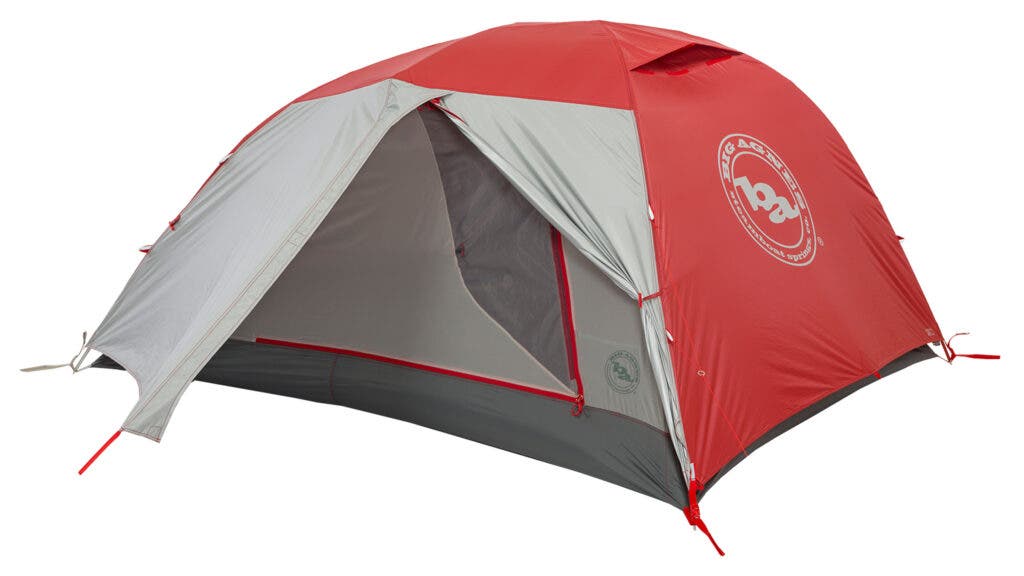
Best Organization
Big Agnes Copper Spur HV2 Expedition
Weight: 5.3 lbs
Peak Height: 39 inches
Vestibule Space: 18 square feet
Pros and Cons
⊕ Good protection
⊕ Generous storage
⊕ Enviable organization
⊗ Low ceiling
This Copper Spur HV2 Expedition is a user-friendly tent that makes it a dependable, high-elevation basecamp. Big Agnes adapted the design from the uber-popular Copper Spur line of three-season tents, taking its high-volume frame and adding fabric walls, larger-diameter aluminum poles, easy-pull zippers, and oodles of interior storage, all while keeping the weight at a reasonable 5 lbs 5 oz.
The Expedition is armored with three poles, a 30-denier polyester ripstop fly with waterproof coating, and a mesh-free 40-denier ripstop nylon inner, which makes it very weatherproof when you need it. “We zipped up everything during rain and high winds, and felt very safe, secure, and dry inside,” reported one tester after a trip to Tahoe National Forest near Mt. Lola. A generous ceiling vent and two window vents on the doors can be opened to bring in fresh air, but our testers still dealt with small amounts of condensation on cold nights.
The 29-square-foot floor area is average for tents in this category, as is the 39-inch peak height, but the Expedition’s design makes it feel larger than its stats. That’s thanks to a pitch that angles the walls more vertically, maximizing interior volume. Two 9-square-foot vestibules and two doors boost livability, allowing each camper their own space and entry/exit.
The main draw for testers? Ten interior pockets that boast best-in-test organization and helped our crew stay sane while waiting out storms during gear-heavy winter trips. Pockets vary from large overhead slings to smaller corner pockets where you can stash earplugs, gloves, or headlamps.
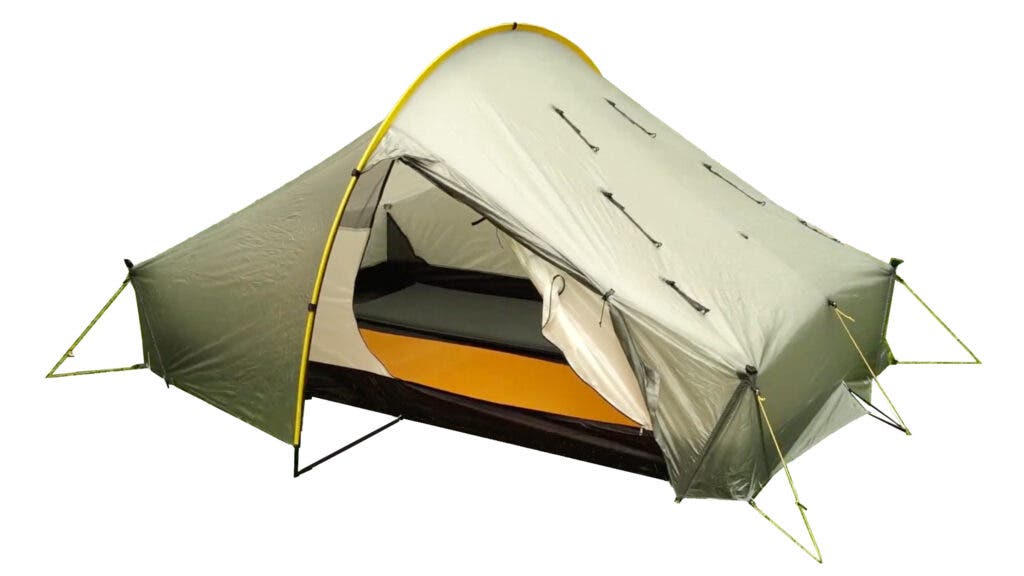
Most Versatile
Tarptent Scarp 2
Weight: 3.4 lbs
Peak Height: 45 inches
Vestibule Space: 11.8 square feet
Pros and Cons
⊕ Very lightweight
⊕ Seasonal versatility
⊕ Packable
⊗ Small vestibules
Usually you have to pay more to carry less, but the Scarp 2 hits a rare sweet spot: it’s relatively affordable while delivering top-notch winter protection and excellent versatility in an ultralight package.
Thanks to modularity common in pyramid and tarp-style tents, the Scarp 2 can be set up in various configurations: It can be pitched without the inner or the fly, respectively, and has two liner options that let you toggle between three-season versatility and maximum weather protection. Regardless of your loadout, the Scarp stays under 3.5 pounds and packs down to the size of two paper towel rolls, even in winter mode.
“Livability is excellent, and it stood strong in 40-mph gusts,” said one tester after a 2,650-mile journey along the Continental Divide Trail. The thru-hiker also praised the Scarp’s durability: Made of 30-denier silicone-coated ripstop nylon, it held up to abrasive rock slabs and pine needles over the four-month trip.
Headroom is impressive, with a 45-inch peak height, while the 86-inch-long floor accommodates taller campers. Storage space is slim compared to other tents on this list, with only 5.9 square feet of vestibule space per side.
The setup is basic: A single pole arches over the midsection, built-in carbon-fiber struts support the ends, and six guy-out points complete the pitch. Winter adventurers can add optional cross poles ($45 to 70 more), which make the tent freestanding and, more importantly, allow for heavy snow loads: “We had a few fresh inches of snow overnight and the ceiling didn’t sag at all,” said one tester.
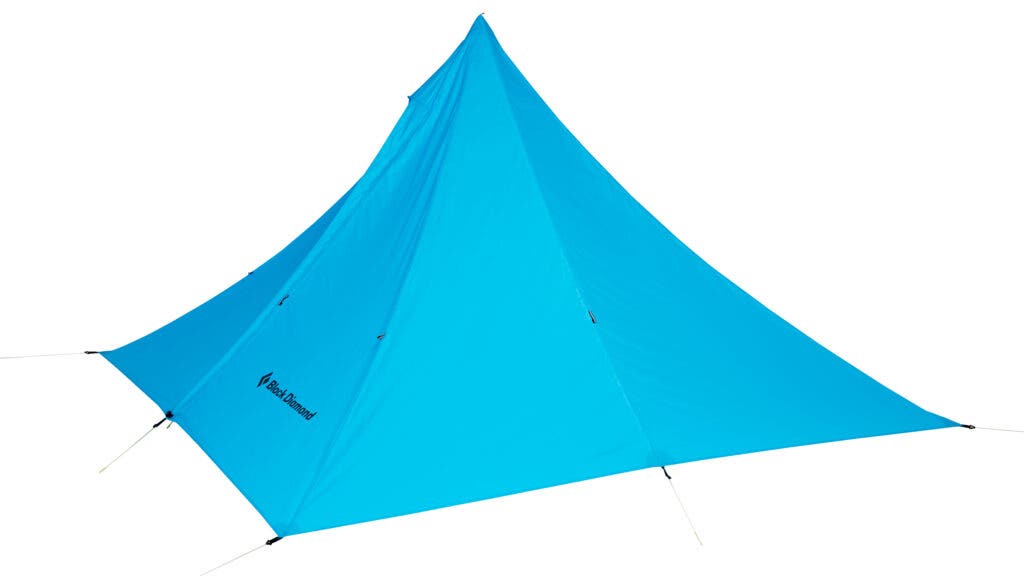
Best Value
Black Diamond Mega Light 4P
Weight: 2.8 lbs
Peak Height: 65 inches
Vestibule Space: None
Pros and Cons
⊕ Great space-to-weight ratio
⊕ Affordable
⊕ Versatile
⊗ Steep learning curve
⊗ No vestibule space
⊗ No pockets
This longtime-favorite ultralight shelter weighs less than three pounds and packs down to the size of a small watermelon, all while providing a sprawling 51 square feet of living space—enough to fit three people with winter gear in the main body of the tent.
Testers in Grand Mesa National Forest found the 30-denier polyester Mega Light to be extremely livable—big enough to set up camp chairs inside—and that its pyramidal shape helped to shed snow and prevent collapse in heavy storms. They appreciated the top vent, which keeps this solid fabric pyramid from turning into a sweat lodge.
The palatial shelter can be difficult to set up, especially in bad weather and high winds, and using appropriate snow anchors are a must. “The center-pole pitch takes practice for one person to set up, but it held taut in 25-mph gusts without sagging thanks to midpanel guy lines and some snow stakes,” said one tester after a trip in Colorado’s Uncompahgre National Forest.
There are no vestibules for gear or interior pockets, which means organization takes discipline. However, the massive floor plan ensures everything stays covered. Its floorless nature makes it ideal for pitching over snow, with near-limitless possibilities for digging out deep floors, benches, and tables.
The Mega Light’s versatility can be improved with a Mega Bug insert (an additional $350), which adds a floor and a mesh body, or by laying down a separate DIY groundsheet.
At $400, the Mega Light remains an all-time classic value buy that can be used any time of year and customized throughout the seasons for a variety of adventures, especially for fast-paced winter adventures below treeline.
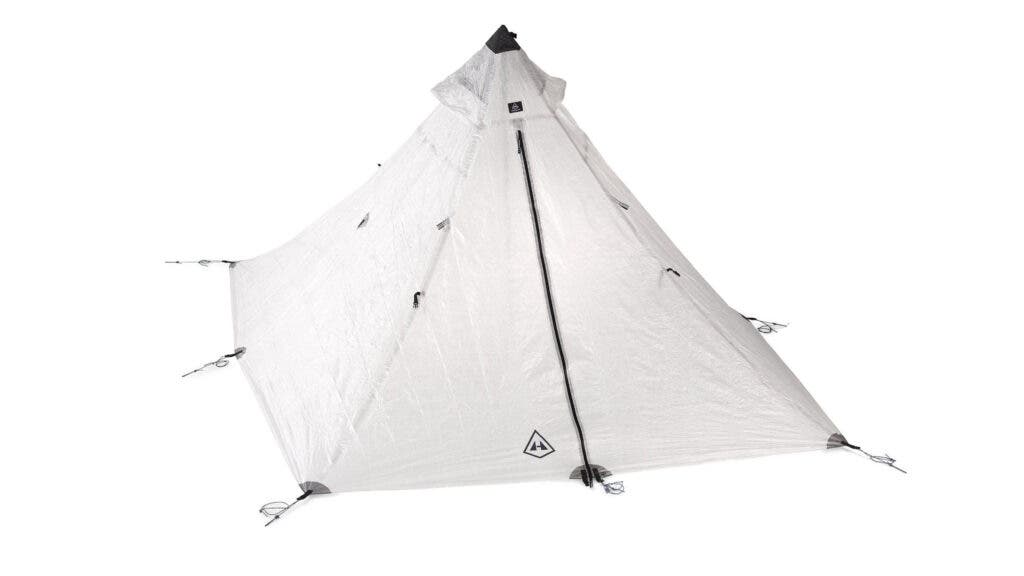
Lightest
Hyperlite Ultamid 2
Weight: 1.2 lbs
Peak Height: 64 inches
Vestibule Space: None
Pros and Cons
⊕ Outstanding space-to-weight ratio
⊕ Lightweight
⊕ Durable
⊗ Tedious setup
⊗ No vestibule space
⊗ Expensive
Want to go ultralight in winter? You can’t do much better than the floorless Hyperlite Ultamid 2. Made of super-strong, uber-light Dyneema fabric, this simple pyramid tent is as minimal as it gets, and that’s reflected in its final packed weight of 1 pound, 3 ounces.
But, being a pyramid, it also boasts one of the best space-to-weight ratios on this list, offering a 63-square-foot floor plan that makes it perfect for ski touring or any other gear-hungry winter overnight. The bare-bones layout is typical for a pyramid-style tent, with limited internal storage, no vestibule, and slight condensation on nights below 45 degrees despite two mesh top vents. A mesh and Dyneema insert for the Ultamid is sold separately ($399); otherwise, it’s designed to run floorless. Two people can comfortably sit in camp chairs underneath, and it was easy to cook inside during inclement weather.
The shelter’s Dyneema fabric, while pricey, can handle significant wind and snow-load without sagging, and is very resistant to tears and scratches from rocks, branches, and ski edges. “With eight guy outs, this tent feels like it’s cemented into the ground,” said one tester after experiencing 30 mile-per-hour gusts in Coconino National Forest.
Setup is simple using either two trekking poles strapped together, or a carbon fiber center pole (sold separately). Like most pyramids, it can be tedious to set up in storms, but testers found its durability, weather protection, and waterproofing worth the hassle.
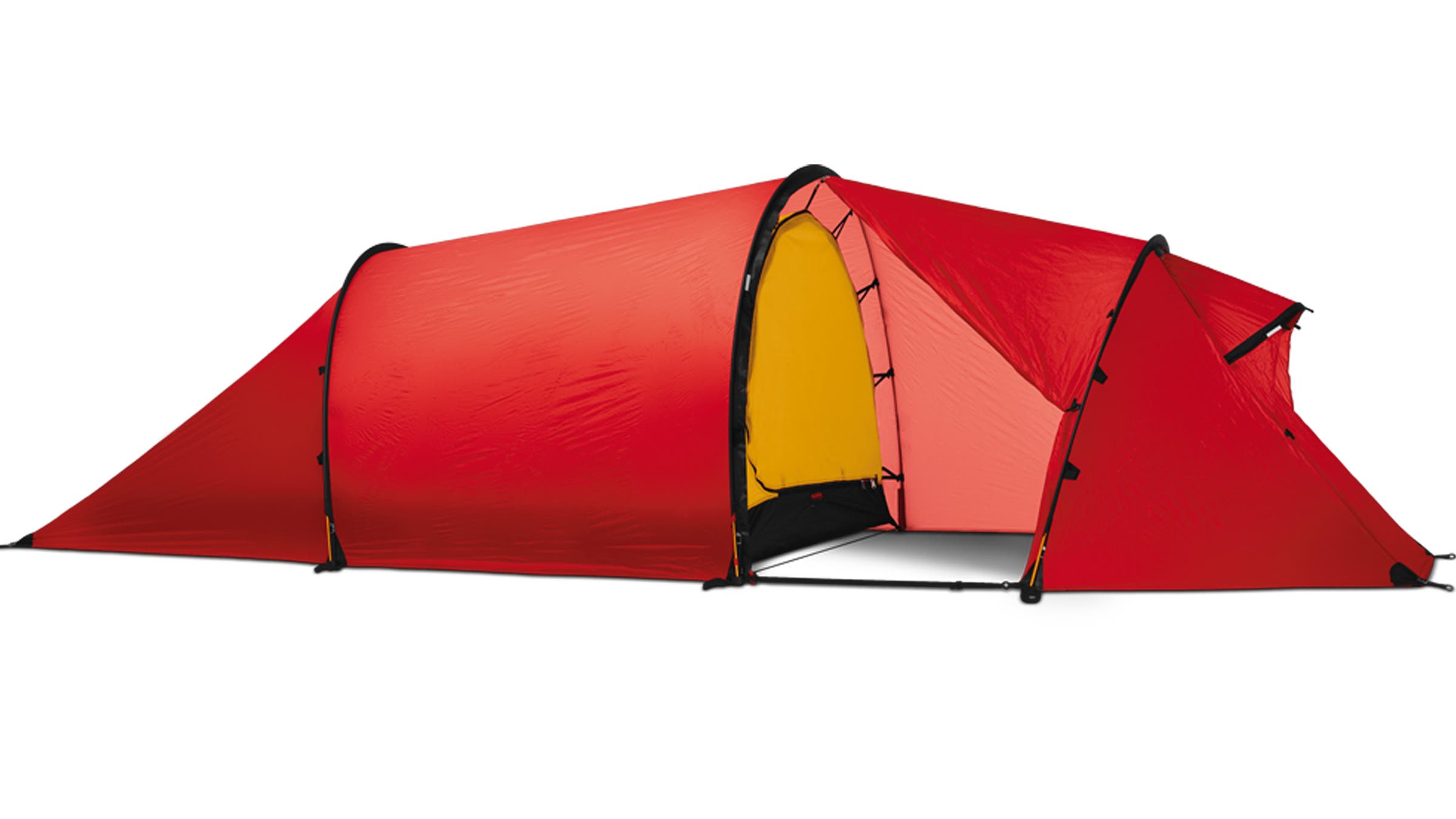
Strongest
Hilleberg Nallo 2 GT
Weight: 6.4 lbs
Peak Height: 39 inches
Vestibule Space: 25 square feet
Pros and Cons
⊕ Large vestibules
⊕ Durable
⊕ Best-in-class weather protection
⊗ Pricey
⊗ Heavy
⊗ Low ceiling
Back in 2010, we referred to Swedish tent-maker Hilleberg’s Nallo GT 2 as “a mountaineering tent that costs as much as a mortgage payment, but delivers homelike comforts.” With a price tag north of a grand, that assessment still rings true today—it’s unreasonable for most weekend warriors. But for adventurers embarking on long, unpredictable expeditions, the Nallo GT 2 is a wise investment, thanks to its best-in-test weather protection and near-endless vestibule storage.
The double-wall tunnel tent is made from Hilleberg’s proprietary Kerlon fabric, a lightweight, 30-denier ripstop nylon treated with three layers of silicone for excellent tear-strength and waterproofing. (Lightweight is a relative term for this tent, which tips the scales at 6 pounds, 6 ounces packed.) Testers loved the large fly vents that combat condensation when the hatches are battened, and eight guy-out points for high-alpine storms.
The Nallo GT 2 pitches with three poles and sports a low-profile design that helps shed high wind. “Perched on an exposed, 12,000-foot summit in Colorado’s Park Range, “it barely shuddered in 30-mph gusts,” reported one tester.
One consequence of that low profile is less overhead space—its peak height is only 39 inches, one of the lowest in test, meaning taller campers might feel cramped when sitting up and changing clothes. Its long, rectangular design and a whopping 25-feet of vestibule space improve livability and provide enough interior storage space for even the most equipment-hungry expeditions.
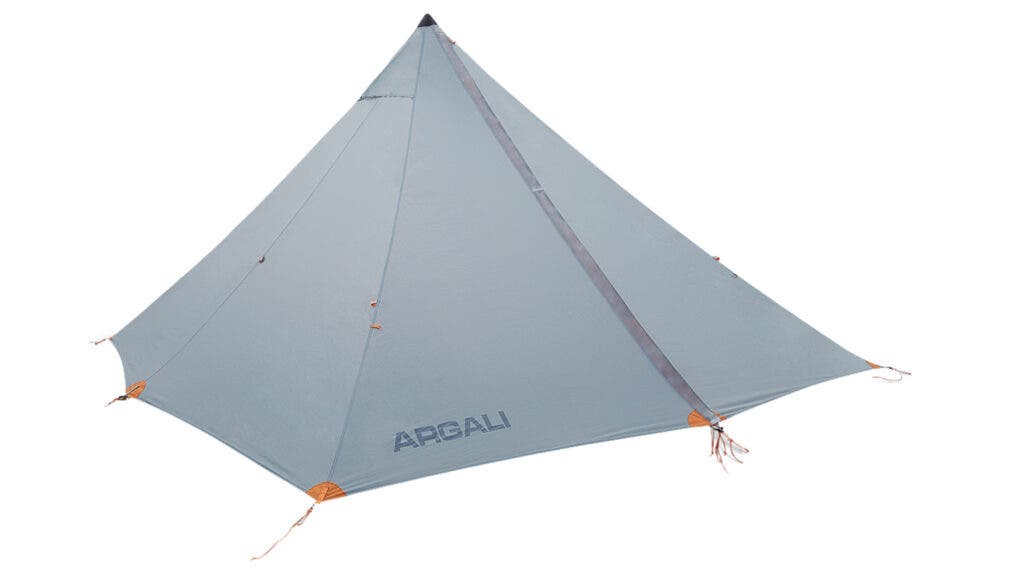
Most Innovative
Argali Absaroka
Weight: 2.2 lbs (tent only); 5.1 lbs (stove included)
Peak Height: 74 inches
Vestibule Space: n/a
Pros and Cons
⊕ Backpacker-friendly stove
⊕ Great space-to-weight ratio
⊕ Packable
⊗ Fire risk
Argali’s Absaroka is a monstrous 84-square-foot, four-person pyramid tent that brings all the beloved attributes of a pyramid—low weight, spaciousness, and versatility for summer adventures. But it also has something extra: the option to install a backcountry stove.
The Absaroka can be run floorless or with a full mesh insert (sold separately), and pitched with either a carbon fiber center pole or two trekking poles tied together. It’s built from 20-denier ripstop sil-poly, which testers found to hold strong against snow loads and remain mostly sag-free. “Woke up to two inches of fresh snow and most of it had already slid off the steep walls,” one tester reported. Like most Mids, organization inside takes discipline, as there are no pockets or storage options.
But the main event is the collapsible Skyline Ti Titanium Wood Stove (sold separately). It assembles without tools in five to ten minutes and sits in the middle of the tent, adjacent to the center pole. The titanium stove pipe, which rolls down to the size of a one-liter water bottle, runs through a heat-resistant, silicone-coated fiberglass stove jack atop the tent.
Testers loved the ability to make winter nights downright luxurious and sociable. “We were able to sit comfortably inside the tent stripped down to our baselayers on a freezing night,” one said after a trip in Grand Mesa National Forest. “We added a few bigger rounds right before bed and the stove provided substantial, sleep-inducing heat. By morning, the stove was completely cool and ready to be disassembled.”
The compact nature of the stove kit is a bit like magic: It disassembles down to the size of a laptop case, which easily slides into your backpack, while the tent packs up smaller than a paper towel roll. Total weight? Just over five pounds. For folks typically saddled with massive canvas hot tents, it’s a game-changer.
How to Choose a Four-Season Tent
Capacity, Size, and Vestibules
The first thing to consider when buying a tent is its size. You’ll want to know the number of people it’s designed to hold, but also look closely at the square footage to ensure it will work for your specific needs. Check the length of the tent if you are more than 6 feet tall—a couple inches of head and leg room on top of your height are critical for a good night’s sleep. Pay attention to the amount of vestibule space a tent offers, especially if you plan to backpack in colder months with big packs or extra gear.
Weight vs. Durability and Weatherproofing
While the best tents offer a lightweight balance of livability, weather protection, and durability, those qualities often come at a weight penalty. Consider how far you’ll be hiking and how much weight you can comfortably carry over that distance. Some folks are happy to lug a 5-pound tent that has a large floor plan and ample headroom, while others will prefer to minimize weight at the cost of comfort. Once you get a sense of your maximum weight (4 to 5 pounds is about average for a winter tent), think about the weatherproofing you’ll need in the environments you plan to visit. More mesh means more ventilation, but less weatherproofing. In areas with wet weather and high winds, invest in heavier-weight, more waterproof tent fabric and thicker, stronger poles. Burlier floor materials also add weight to the tent, but offer more durability on abrasive ground.
Freestanding vs. Semi- vs. Non Freestanding
Another thing to consider is the type of pitch a tent uses. Freestanding tents are supported by a set of structural poles and can be pitched anywhere, without the use of guy lines or added tension. They are the easiest to pitch, but offer minimal customization in foul weather. Semi and non-freestanding tents all use poles of some sort (structural aluminum poles or trekking poles), but need to be staked out using guy lines. This requires more patience and know-how when pitching, however it also allows the tent to be pitched in a variety of ways, making it easier to fit into tight spaces. Non-freestanding and semi-freestanding tents also typically weigh less than freestanding tents because they don’t come with as many—or any—poles.
Finally, a Pro Tip
The only way to truly know a tent is to spend a couple of nights in it. Check to see if your local gear shop has a rental program (many allow you to test new models and buy them afterwards if you like them.) If not, know the return policies wherever you buy your shelter: Some stores and brands allow you to return used products without a penalty.
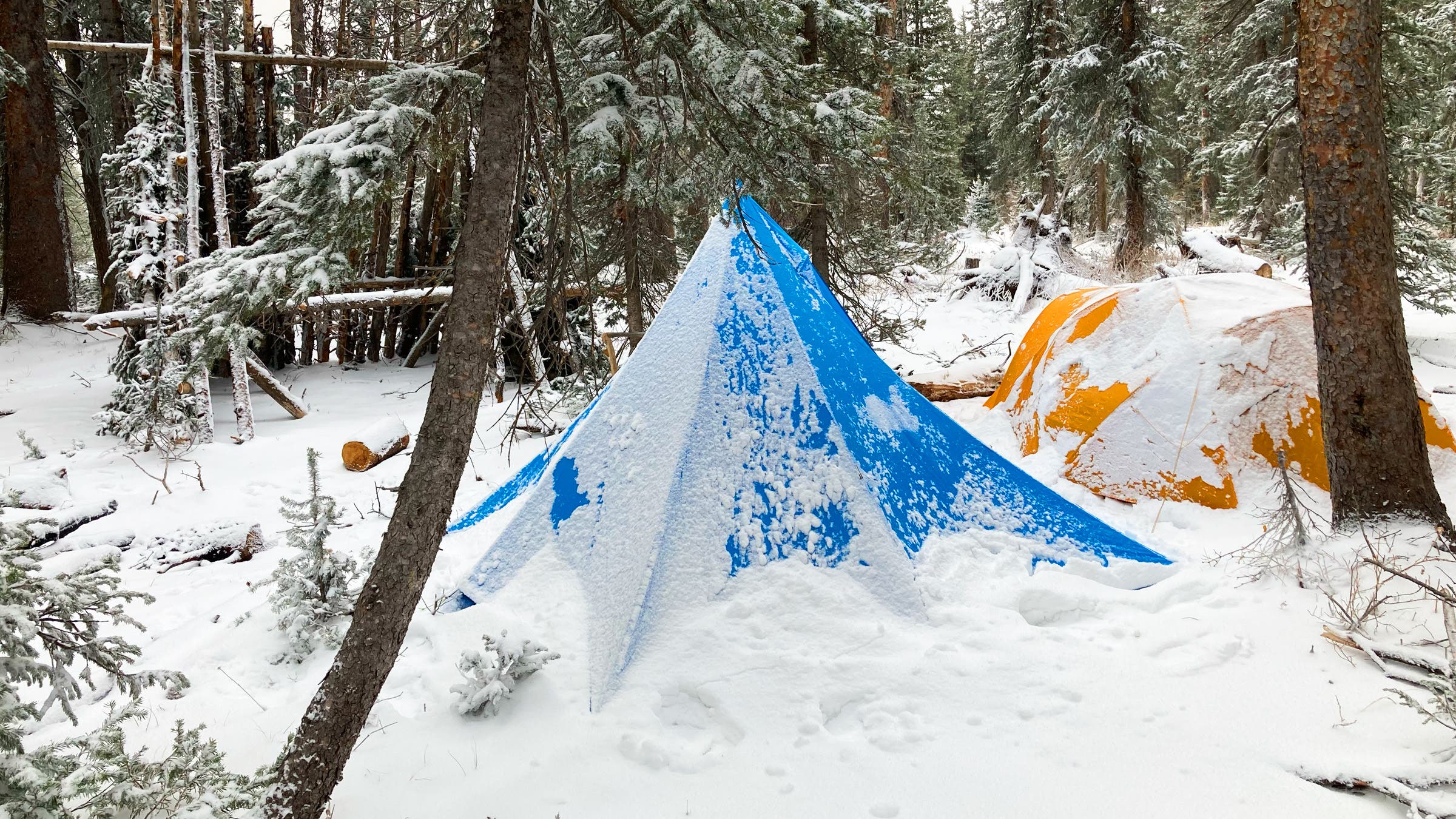
How We Test
- Number of Testers: 9
- Coldest Temperature: 0 degrees F (Chugach State Park, AK)
- Biggest Snowfall: 5 inches (Flagstaff, AZ)
- Number of Nights Slept Outside: 50+
- Highest Elevation: 11,000 feet (Grand Mesa, CO)
Our testing group spanned the country, in wilderness areas from Maine to California. Testers come from a variety of backgrounds, genders, and professions, from public school teachers to park rangers. Over the course of the winter months, these testers evaluated tents on a multitude of criteria, including livability, ventilation, design, weather protection, setup, and price, among other intangibles.
Meet Our Testers
Will McGough has been writing about the outdoors and testing tents for Backpacker and Outside since 2015. Specs aside, he believes the most important thing about a tent is how it makes you feel—a good tent should make you feel at home, regardless of climate and conditions.
Dorn Van Dommelen has hiked and skied in Alaska’s backcountry for 30 years and backpacked, since he was a kid, in Central Pennsylvania. Wherever he goes—multi-day backpacking trips in Denali NP, the Talkeetna Mountains, or near his home in the Chugach State Park—he hauls a bunch of maps and a dog-eared copy of Nietzsche’s Zarathustra.
Mark Post is a Police Officer for the Town of Palisade in Western Colorado. He enjoys exploring the different regions of the Rocky Mountains, including the high country, where he tracks elk, bears, and deer.